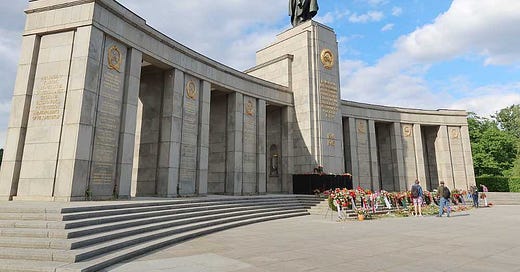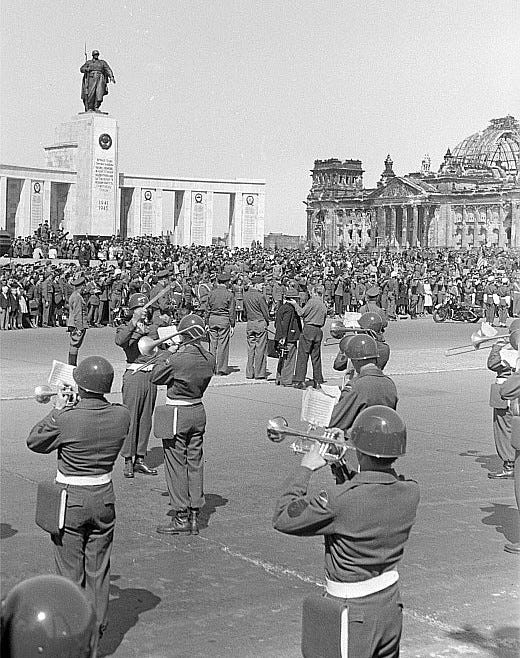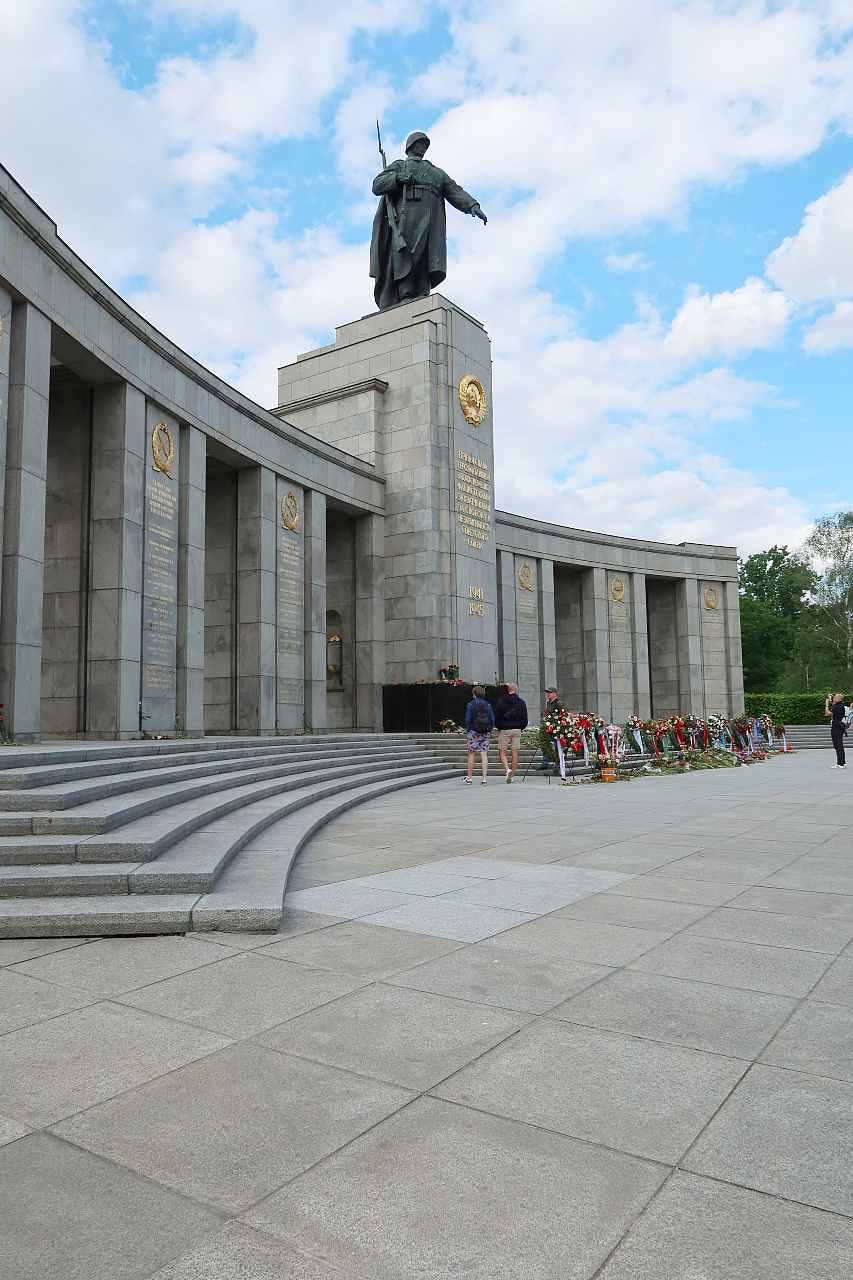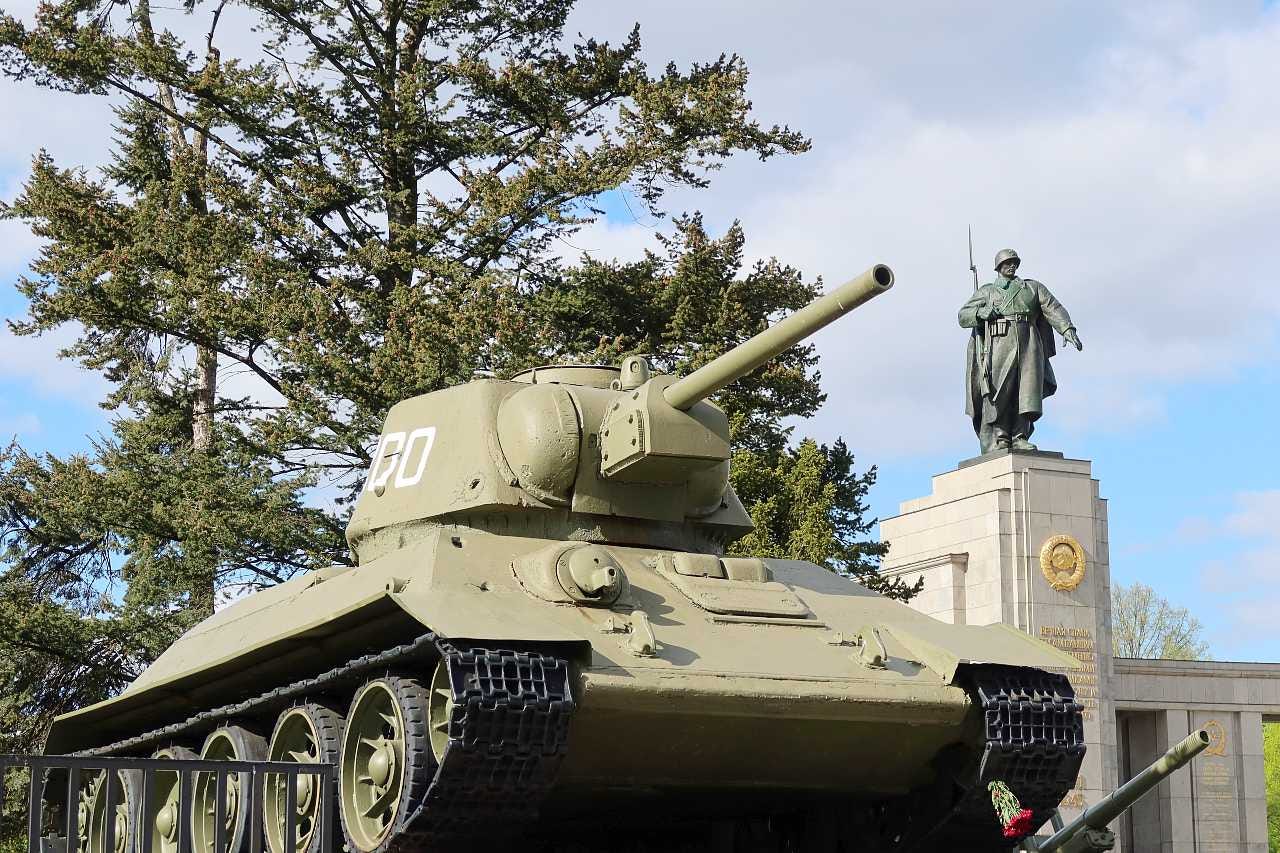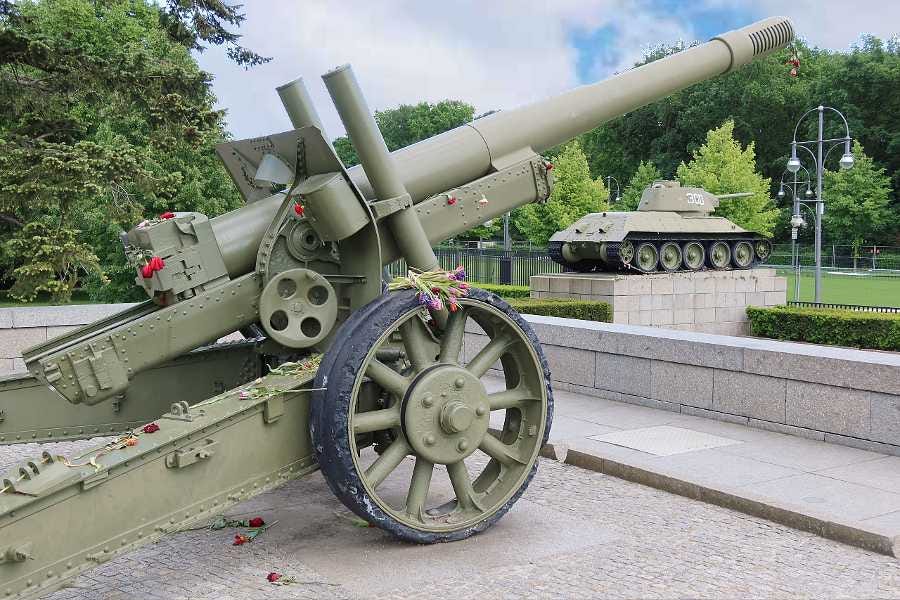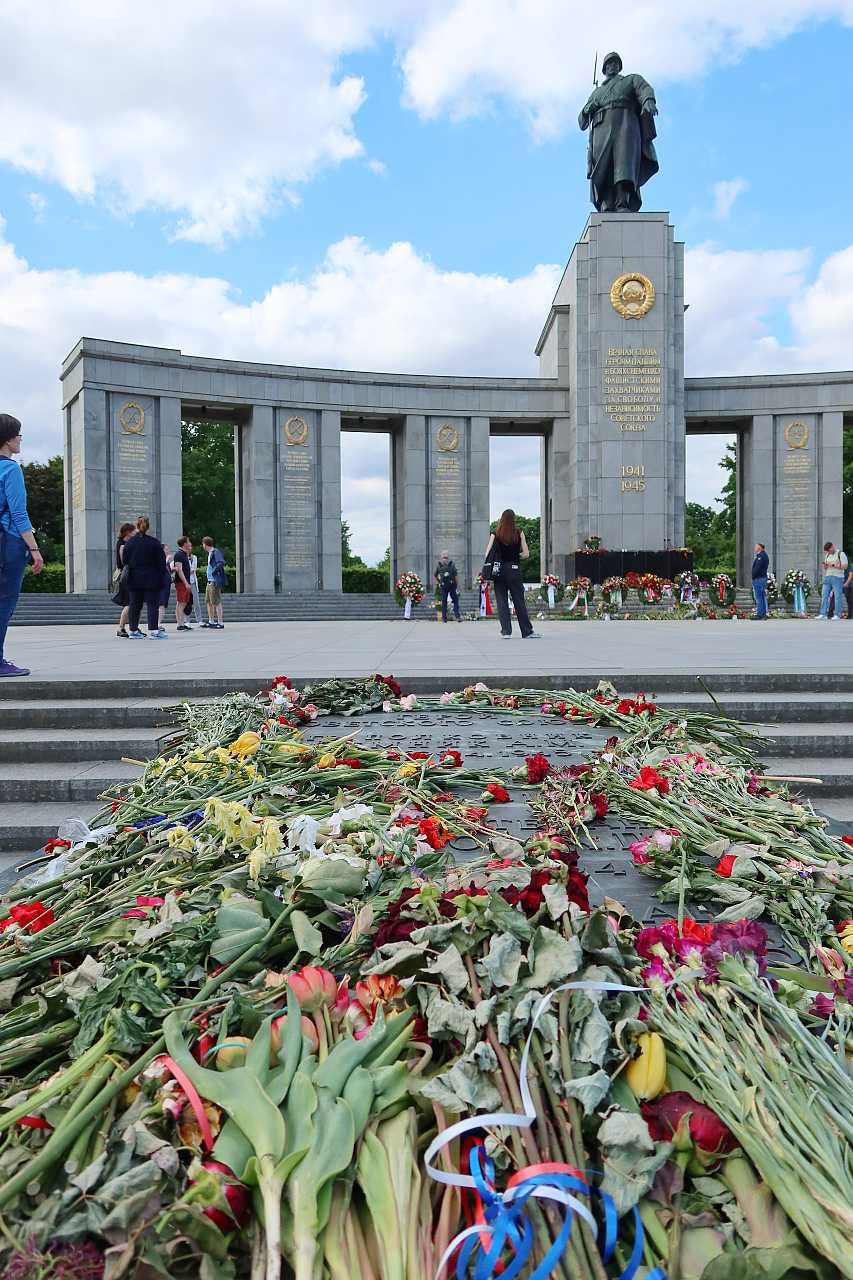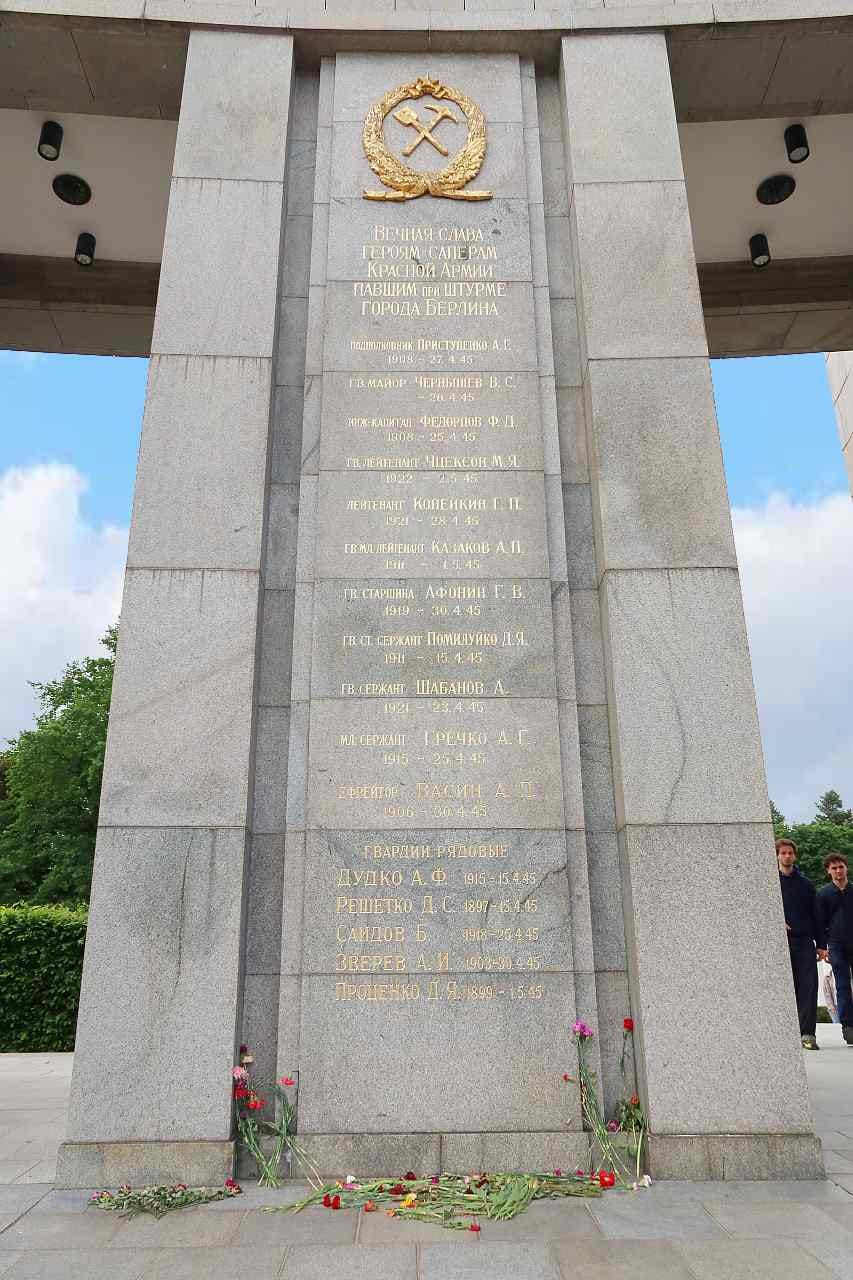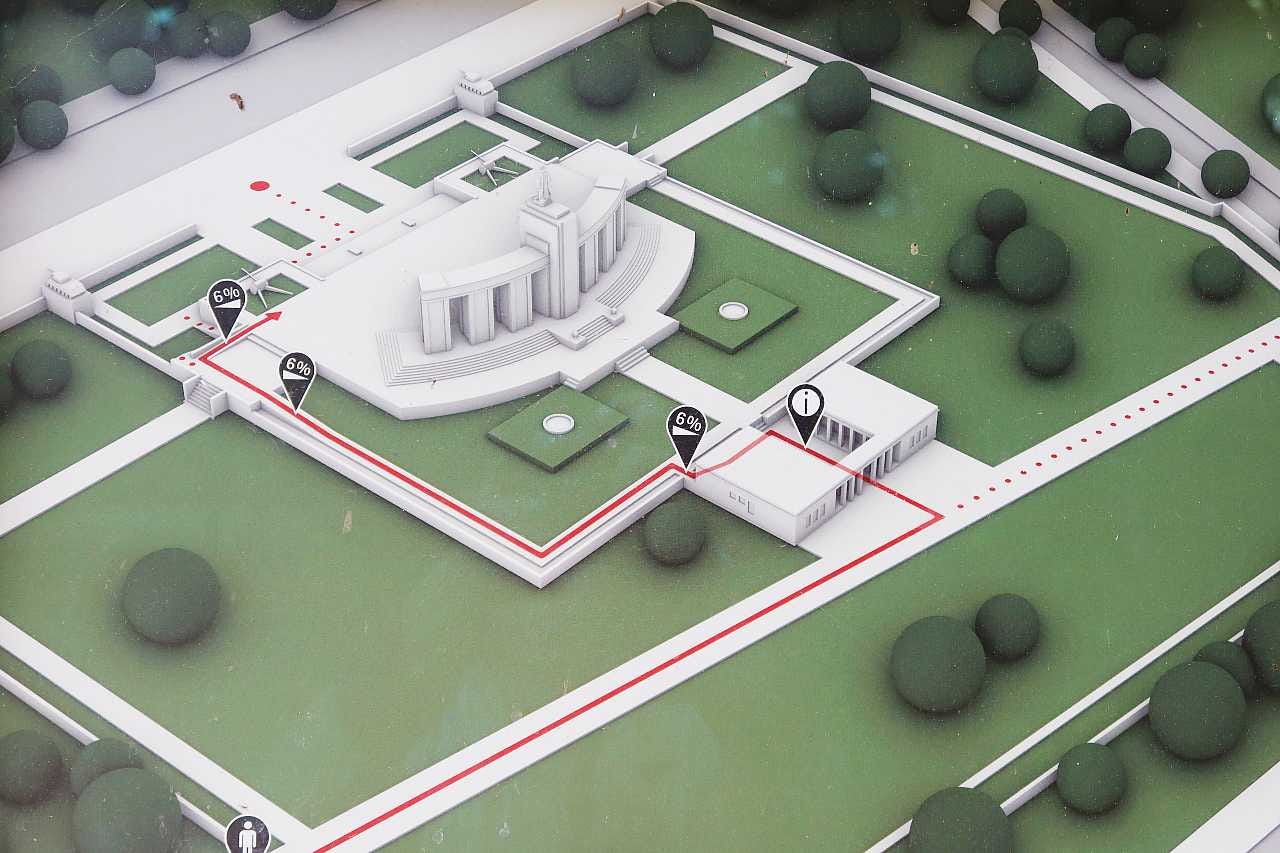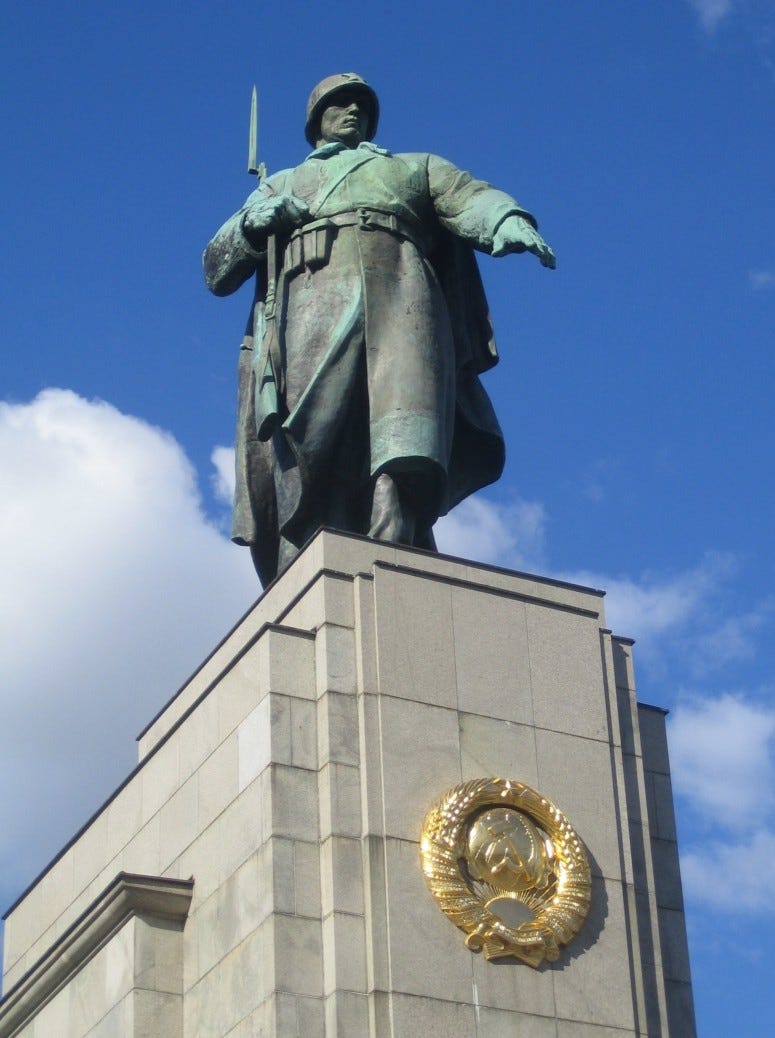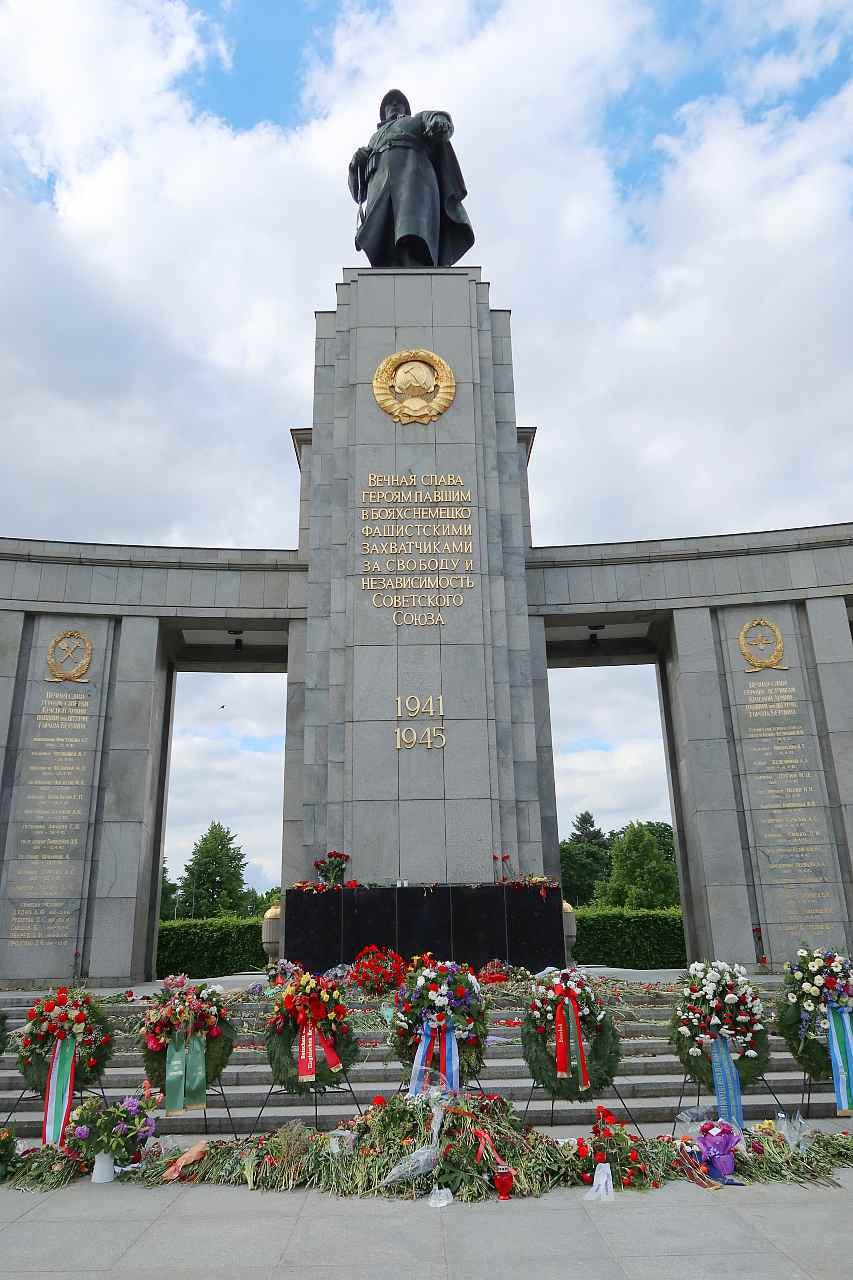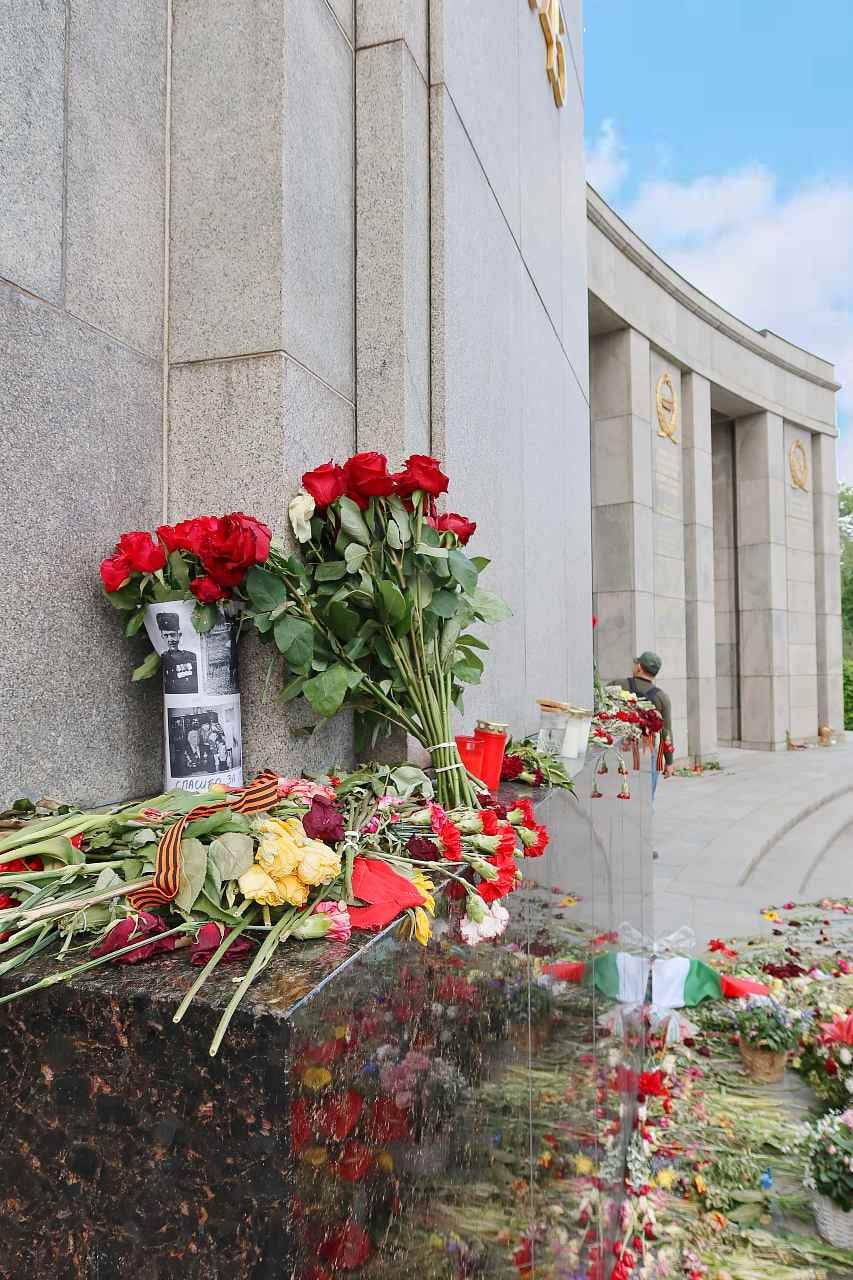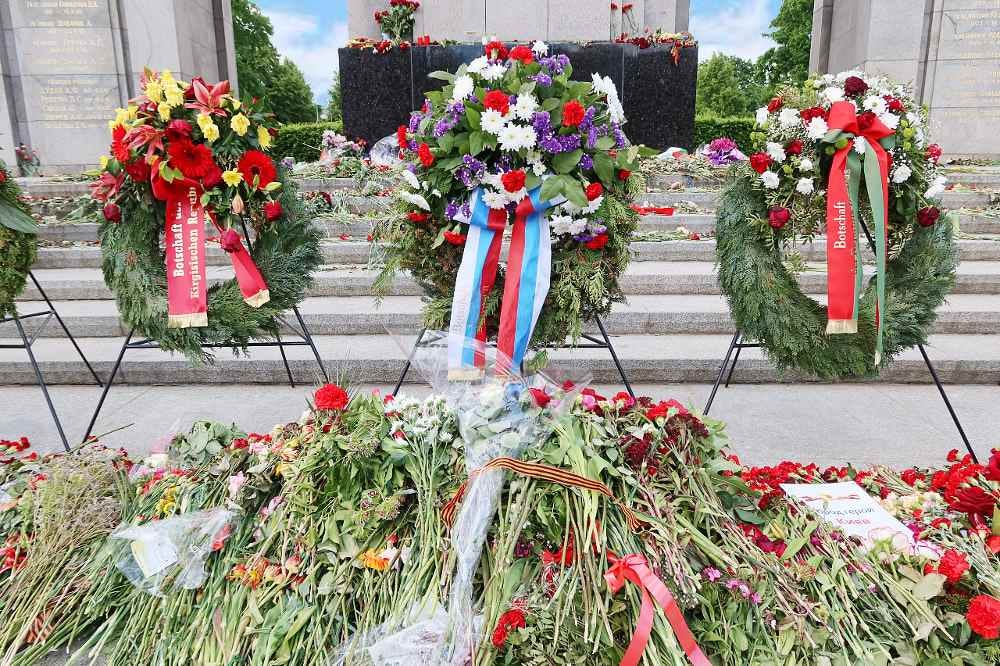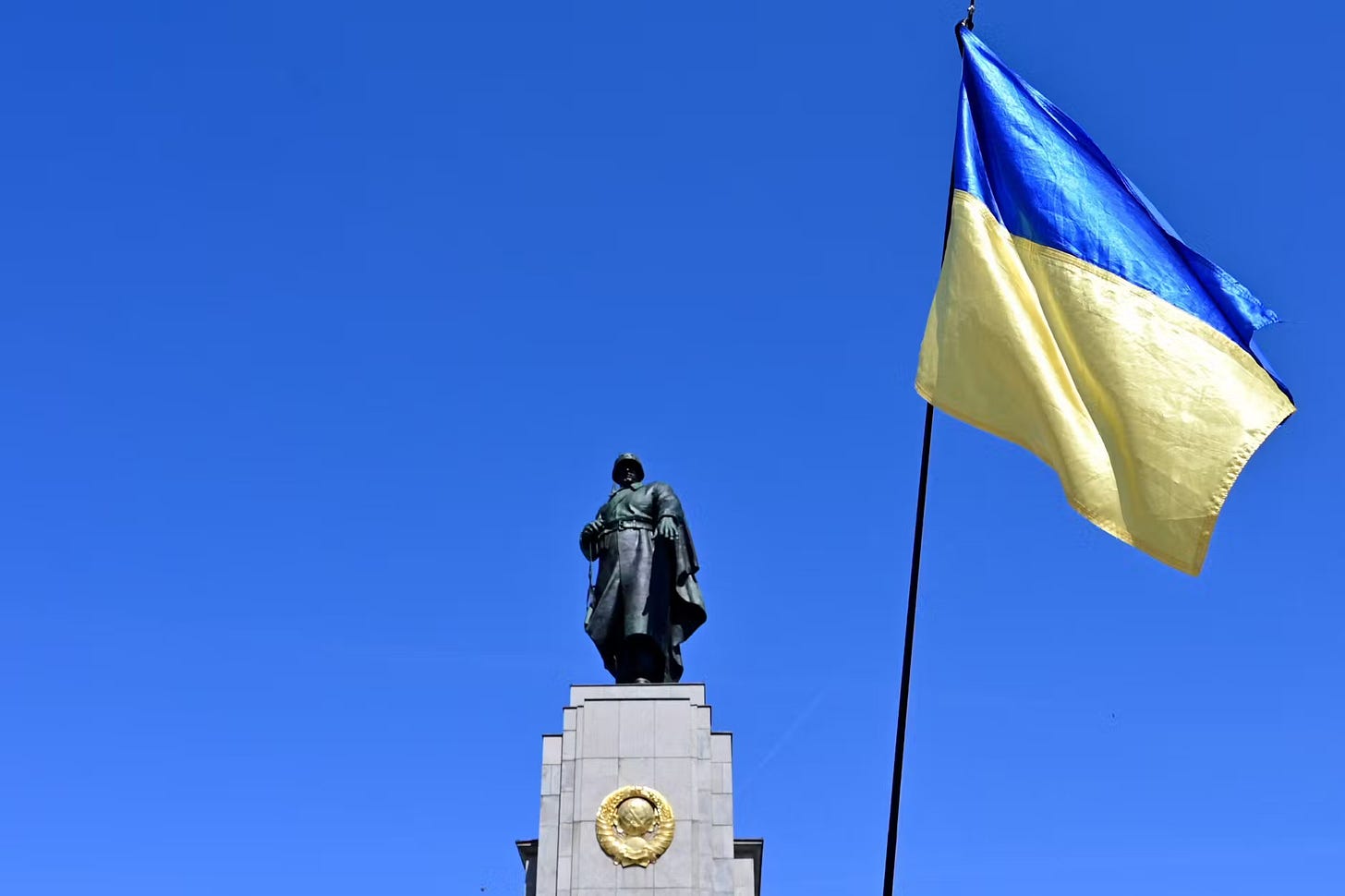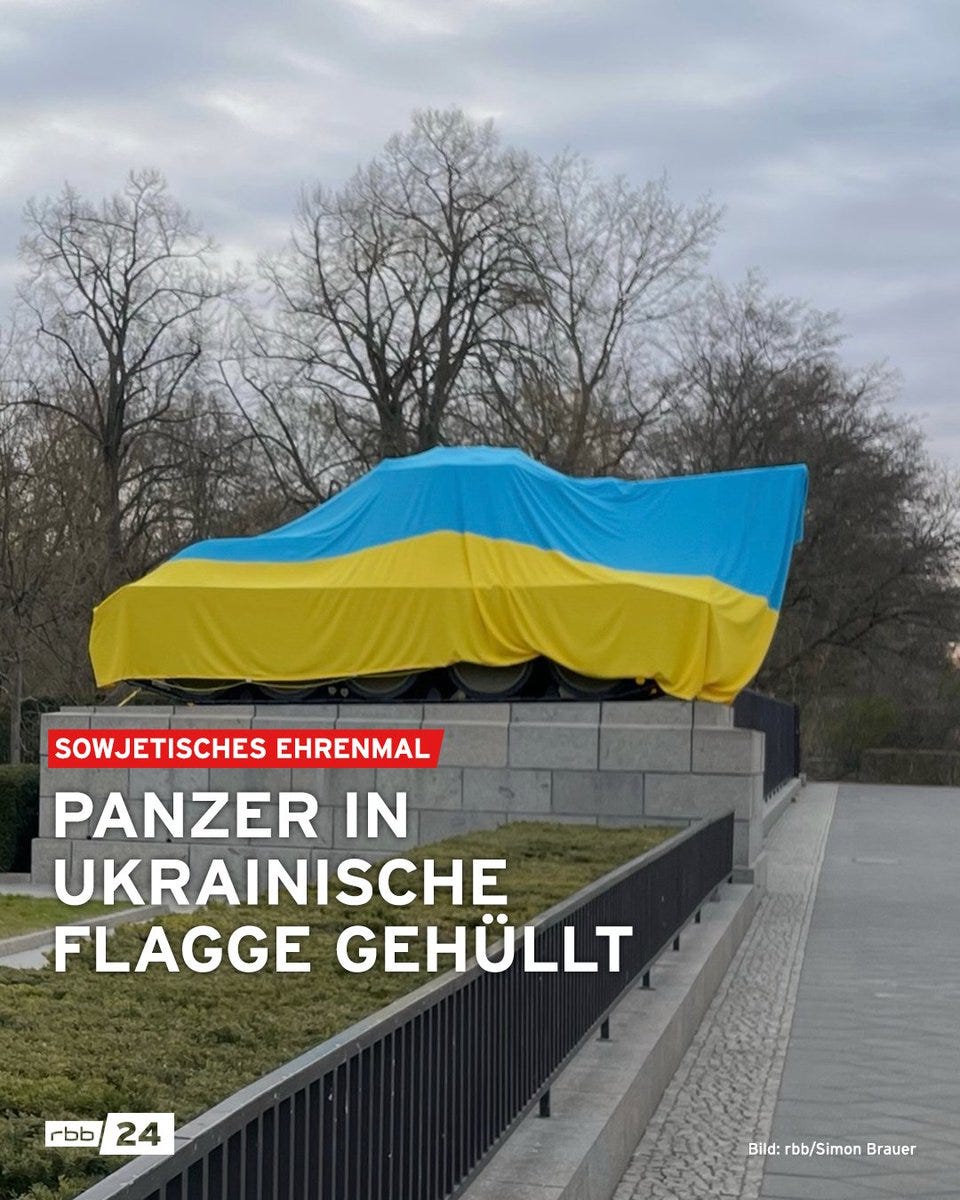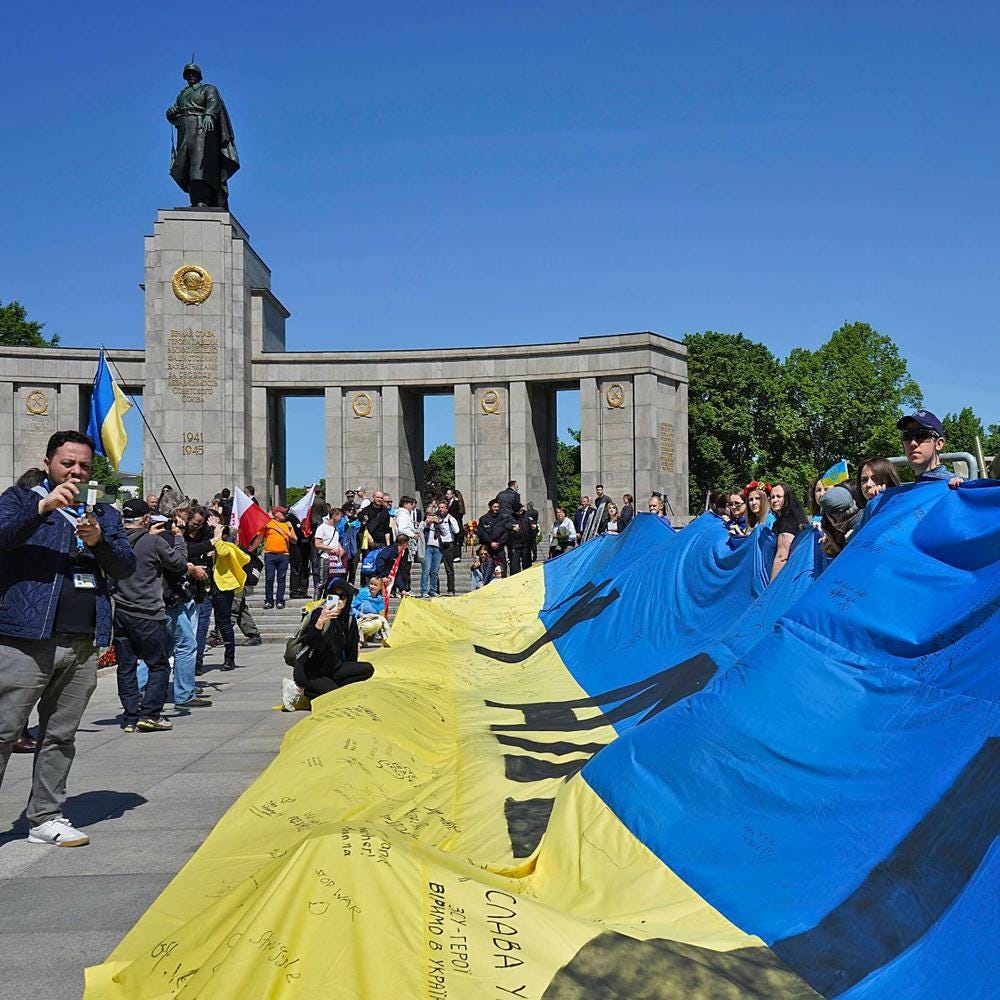The Soviet War Memorial in the Berliner Tiergarten.
The most martial of Berlin's Soviet war monuments, and the most criticised, the Tiergarten Memorial is both a monument and a stage for protest and confrontation.
It is the best-known Soviet war memorial and the easiest to visit, partly because it is perfectly situated for a walk along the main points of central Berlin. Guidebooks call it the most important Soviet memorial. I don't know if that's a fair definition, especially when you consider the Treptower Park complex. The latter was the most 'thought out' memorial and the result is an impressive Gesamtkunstwerk. The Tiergarten memorial, on the other hand, represents the need to remind everyone, including the other occupying powers, who fought and won the battle of Berlin: the Red Army.
As Soviet forces advanced across Eastern Europe towards Berlin, they erected temporary monuments and memorials. There was a sense of urgency about the need for immediate demarcation of territory. The tens of thousands of soldiers who died during the advance also needed to be properly buried. At the same time, in Moscow, architects and artists were already busy planning the construction of permanent monuments.
Why in the Tiergarten?
The decision to build a more massive and permanent Soviet war memorial in Berlin's Tiergarten was taken as early as May 1945.
The construction of the memorial in the very centre of Berlin, just a few steps from the Reichstag, the Reich Chancellery and the Brandenburg Gate, had immense symbolic significance. It was here that Germany's war of aggression began and here that it ended with the surrender of the Wehrmacht on 8 and 9 May 1945. Only six months after the end of the war in Europe, the Soviet War Memorial in Tiergarten was officially inaugurated on 11 November 1945.
The chosen position is a statement in itself. It stands at the intersection of the completed east-west axis and a planned north-south axis, intended to cut through the National Socialist Germania. This new capital was architect Speer's plan to replace the old Prussian Berlin. The proximity to the Reichstag was also particularly significant to the Soviets. The Reichstag was seen as the "nest of the fascist beast" and the symbolic final target of the costly assault on Berlin.
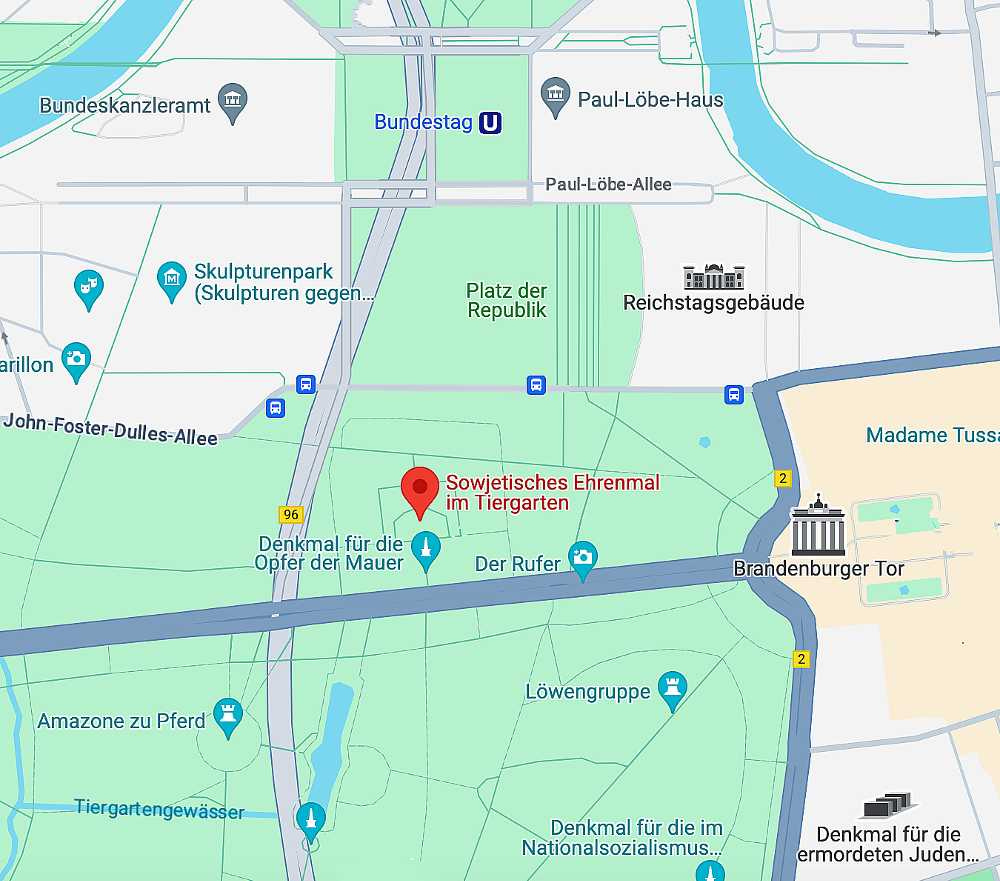
Between Cold War memories and myths.
From its inception, the Tiergarten Memorial invoked strong political statements, including repeated requests for its removal. It also became the subject of urban legends. For instance, unverified claims suggested that the memorial's granite was sourced from the demolished Reichskanzlei (the Government´s Site).
During the Cold War's peak in August 1961, shortly after the Wall's construction, the memorial complex - situated in West Berlin three hundred meters from the Wall - required protection from potential damage by agitated West Berliners. In 1970, a neo-Nazi activist seriously injured a Soviet guard stationed there. The Red Army maintained control over the monument until 1994 when Soviet troops withdrew from the former East Germany. Hence, this monument was cordoned off and protected long before Russia initiated the aggression war against Ukraine.
Located in the British sector, the monument became the subject of growing suspicion and urban legends. Some believed that there were tunnels beneath the complex, hiding weapons and possibly facilitating an attack by the Red Army or the East German army. People who lingered in the nearby park or on the benches were immediately suspected.
A popular anecdote, often told in books, tells of a couple of lovers on a park bench near the Soviet Memorial. Lost in each other, they were startled when a British soldier in full battle dress emerged from the darkness and gruffly asked what they were doing. Realising the situation, he quickly apologised and, embarrassed, retreated into the darkness.
The most martial memorial in Berlin.
It is hard to believe that a couple in love could settle just a few metres from the two Russian T-34 tanks that overlook the memorial. The complex's design is among the most martial in Berlin, modeled after the Memorials of Vienna in Schwarzenbergplatz and Königsberg/Kaliningrad. The colonnades form a semi-circular, transparent space, focusing entirely on the imposing effect of a colossal statue.
The entrance to the Soviet War Memorial Tiergarten is marked by two T-34 tanks from the Battle of Berlin, and two 152mm artillery guns. These guns signaled the end of the war on 9 May 1945.
From there, a few steps lead to two stone sarcophagi where the names of nine "Heroes of the Soviet Union" who died in the Battle of Berlin are engraved.
The heart of the memorial is a colonnade of six granite columns, each representing one of the six branches of the armed forces involved in the capture of Berlin. Each column bears the names of 35 fallen soldiers. Behind the colonnade is the final resting place of some 2,500 Soviet soldiers and officers who lost their lives during the conquest of Berlin.
Most of them fell in the final battles for control of the German centres of power between the Reichstag and the Reich Chancellery, which were fiercely defended by SS groups. Only a few names are inscribed on the memorial pillars, along with texts indicating the various types of weapons used by the fallen. The identities of most of these soldiers remain unknown.
The centrepiece of the memorial is an 8-metre-high statue of a Red Army soldier extending his left arm over the bodies of his fallen comrades. While some interpret this gesture as the Soviet Union "suppressing" Nazi Germany, the monument's designer later clarified: "The war is over. The soldier bids farewell to his fallen comrades and returns home. That is the meaning of the monument".
The Russian text on the central column under the statue reads:
Вечная слава героям павшим в боях с немецко фашистскими захватчиками за свободу и независимость Советского Союза 1941 – 1945
Eternal glory to heroes who fell in battle with the German fascist invaders for the freedom and independence of the Soviet Union 1941 – 1945
Yesterday, today.
As you can see from the photos I have posted, the Tiergarten monument is the destination of official visits - mainly embassies from the former Soviet world, but also Berlin authorities and a few political organisations - and family pilgrimages in the days around 8 and 9 May: Russian and post-Soviet families, children and grandchildren of veterans, who leave not only flowers but also messages and photographs.
"Eternal memory to the heroes of the VDV (Soviet Airborne Forces)! From my father, a veteran of the 25th Airborne Brigade of the Transcaucasian Military District, who passed the whole path from Turkmenistan to Berlin and from there to his native land. Glory to you, defenders of the Fatherland! Let the children live in peace!"
Remembrance and pride, and in some cases gratitude (first the institutional gratitude of the GDR era, then that of those who identify with the more traditional left, who see 8 May not as a defeat but as a liberation), have given way in the last ten years to a much more critical view of these memorials.
Although these are Soviet memorials, where many Ukrainian soldiers are buried, for example, Russia somehow sees itself as the patron of such memorials. Also, according to the German reunification agreements, Germany has to discuss any changes and restructuring with the Russian Federation, not with the other former Soviet states.
Following the Russian annexation of Crimea in 2024, the newspapers of the Axel Springer publishing house petitioned for the tanks to be removed from the memorial in Berlin's Tiergarten. They argued: 'At a time when Russian tanks are threatening free, democratic Europe, we don't want Russian tanks at the Brandenburg Gate'. But the Berlin Senate rejected the request. This decision remains unchanged, despite recent actions in the Baltic states, where tanks have been removed and Soviet obelisks dismantled over the past two years.
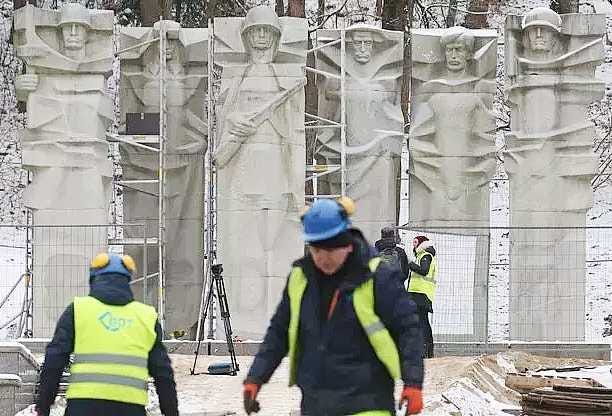
In 2022, the memorial's circumstances intensified due to the onset of Russia's aggressive war against Ukraine. It became challenging to differentiate the official, polished depiction of the Great Patriotic War from the aggressive propaganda framing the war against Ukraine as a battle against fascism and Nazism. A notable incident occurred in May 2022 when activists draped the Soviet tanks in the Ukrainian flag.
The Berlin Senate subsequently provided the police and the public with a comprehensive list of restrictions associated with commemorations and celebrations on 8/9 May. One such rule prohibited bringing national flags, including Russian, Ukrainian, and Soviet flags, to the monuments. These regulations were strictly enforced, but by 2024, there were more Russians displaying flags throughout the city than ever before.
Berlin has been and continues to be viewed as a front in the battle of symbols. And, a target to be hit, at least verbally.


